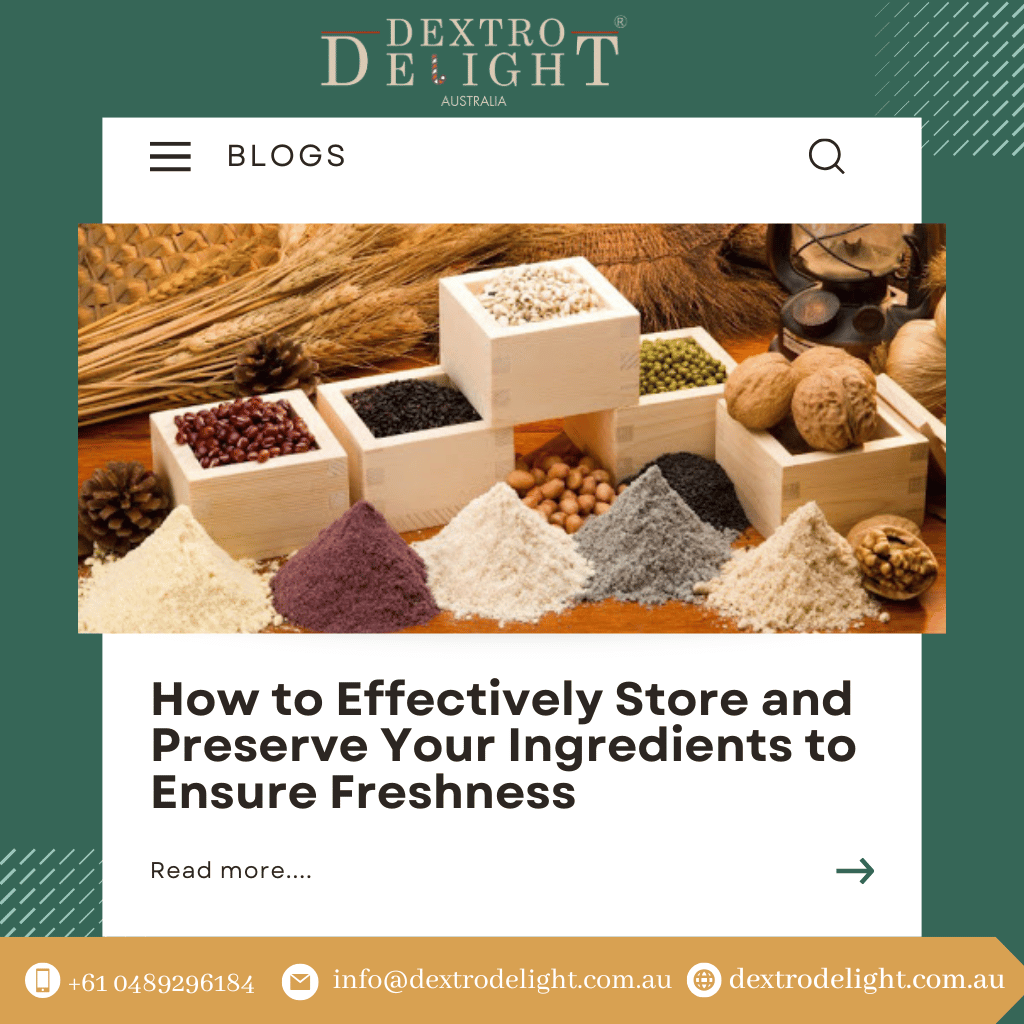
How to Effectively Store and Preserve Your Ingredients to Ensure Freshness
In today’s fast-tracked food business, freshness is more than just something to desire; it is a necessity. Whether you are a home cook experimenting with new recipes or a business sourcing from the best food ingredient suppliers in Australia, you can make a recipe by retaining the natural taste, aroma, and nutritional value of a product.
Wise storage extends shelf-life, reduces wastage, and saves precious money and resources. Here are some practical methods with research backing to ensure storage and preservation of ingredients, from keeping them fresh to retaining flavour as the day you bought them.
1. Understanding the Unique Needs of Fresh Produce
Fruits and vegetables cannot all be treated alike in storage. For example, apples, bananas, and avocados give off ethylene gas, whose effect on other produce is to ripen it and spoil it faster. For best freshness:
- Leafy greens: Store in an airtight container or silicone bag with a paper towel to absorb any moist air.
- Roots: Store in a cool and dark place, rather than a fridge.
Berries: To prevent mould, never wash berries before putting them away. Glass or silicone airtight containers keep out air and moisture so that large-scale food-killing activities get eliminated.
Top ingredient suppliers in Australia advise certain packaging methods that prevent oxygen from coming in, thus preserving packaging time, quality, and safety.
2. Optimizing Refrigerator Organization
The fridge plays a critical role in preserving ingredients, but placing items in the wrong place can cut short their life. Some general rules include:
- Above the main shelves: Leftovers and ready-to-eat items such as dairy are best there, clearly because the temperature remains consistent.
- Crisper drawers: Set the humidity controls low for fruits and high for vegetables.
- Door shelves: Make this the home of condiments; do not put milk or eggs there since it is the warmest spot. Alternative options, such as beeswax wraps, are great for wrapping up bowls, cheese, or sandwiches.
These wraps allow some air exchange while preventing moisture from escaping, which is just what you need to preserve freshness in an eco-friendly manner.
3. Freezing Correctly for Long-Term Storage
Freezing is probably the most effective means of preserving freshness in food. But if not done well, freezer burn can degrade the texture and flavour. Here are a few tips on how to avoid it:
- Use airtight containers or reusable silicone bags that are freezer safe.
- Tightly wrap the meats before freezing, as ice crystals might accumulate on the surface.
- Always label food with storage dates, allowing you to use the product in due course before it deteriorates.
Batch cooking and freezing portions are excellent for saving time during the week and also for minimising wastage. With similar freezing standards, many food businesses keep their bulk supplies fresh for a long period in Australia.
4. Practicing First-In, First-Out in Your Pantry
Some pantries often end up being the forgotten places for ingredients. FIFO says the older ones should be used first before newer ones. Practical methods include:
- Put the just-purchased items in the back of the shelving.
- Bring the older ones forward so they are easily grabbed.
- Once a month, perform an expiry-date check to prevent possible wastage.
For grains, flours, and pulses, airtight glass jars or a food-safe container are the best option. These not only exclude pests but also preserve texture and taste.
5. Safe Handling and Hygiene Practices
Poor handling will affect the freshness, no matter how good a method is for storage. Wash your hands and utensils always before handling food, and separate raw from cooked products to avoid cross-contamination. These simple measures ensure the protection of both ingredient quality and the health of consumers.
For those businesses that buy in bulk, such a practice is vital. Working with the best food ingredient suppliers in Australia will ensure you receive the product that has already been processed under stringent hygiene and safety standards. Thereby, upon its proper handling either at home or in the kitchen, we ensure balance is kept in the chain of freshness.
6. Packaging That Protects
Packaging is as important as storage condition. Exposure to sunlight, air, or moisture will rapidly deteriorate foods. The options are:
- Vacuum packaging: Best for fresh foods, preventing oxidation. •
Beeswax wraps: Mostly short-term.
- Glass jars: For dry goods like nuts, seeds, and spices.
For food businesses, grade the ingredients according to freshness standards that could include size, appearance, or aroma to help maintain a reputation for quality.
Final Thoughts
Freshness is the outcome of a series of conscious choices at every step, from sourcing to storage. Knowing the peculiarities associated with each ingredient, organising your fridge and pantry, freezing well, and careful food handling, all these go a long way in keeping ingredients fresh and good for a longer period.
At DextroDelight, our belief goes beyond wrapping food; it fosters keeping the food’s natural goodness from farm to fork. Whether you’re into food preparation at home or sourcing in bulk for business, there’s something we’re assured of: fresh and sustainable have to go hand in hand.
